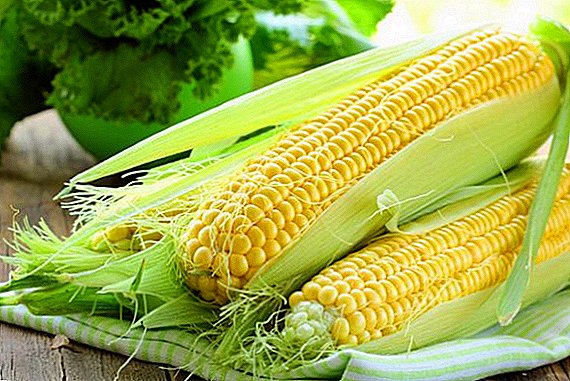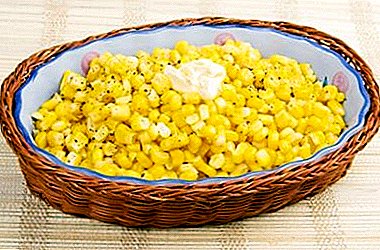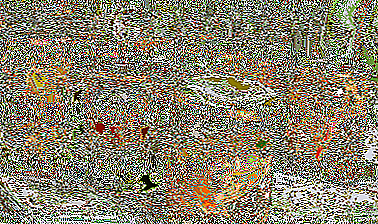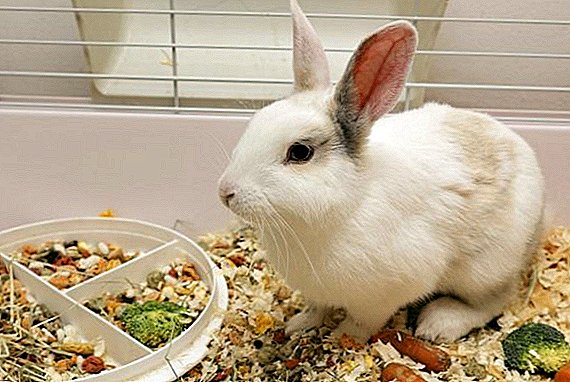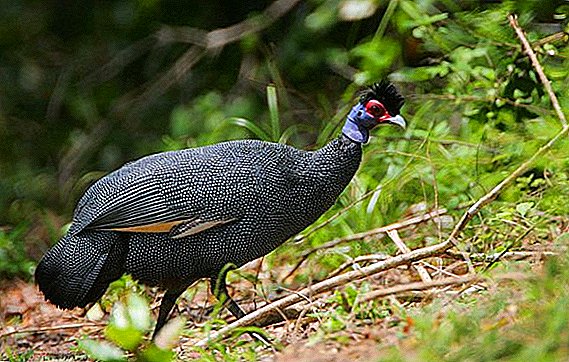 The cubed guinea fowl is a representative of warm latitudes, but thanks to its ability to adapt well to the conditions of detention, it is gradually spreading in our edges. This exotic bird is good not only for decorative purposes - it has tasty dietary meat, and eggs are better than chicken in terms of nutrients.
The cubed guinea fowl is a representative of warm latitudes, but thanks to its ability to adapt well to the conditions of detention, it is gradually spreading in our edges. This exotic bird is good not only for decorative purposes - it has tasty dietary meat, and eggs are better than chicken in terms of nutrients.
Description and appearance
Chubaty guinea fowl - one of the representatives of the family guinea fowls, a distant relative of hens.  These birds are characterized by:
These birds are characterized by:
- Body length ranges from 45 to 56 cm.
- Weight - not more than 1.5 kg.
- The plumage attracts attention - black feathers with blue tint are covered with white specks. This color is called pearl barley.
- The head is completely bare, blue in color, has a tuft of feathers of a rich black color. Around the eyes, the skin is colored red.
- The bill is mainly blue, and its tip is yellow.
- The neck is long and graceful, feathers are colored anthracite with blue tint. Feathers are droplet-shaped with white specks. They are placed on the neck so that the impression of a dressed collar.
- The breast is large and fleshy, especially in females.
- Paws are proportional to the body, powerful, blue with a tint of shade.
- Guinea fowl live for 10 years.
Did you know? In Greece, guinea fowls were considered the sacred birds of the goddess Artemis.
Where dwells
Chubat guinea fowl - a resident of the African continent. She lives in the areas of sparse forests and savannahs south of the Sahara, in dense forests you will not meet her. Birds live in flocks of 40-100 individuals, constantly wandering in search of food. This variety, like all others, thanks to delicious meat is the object of hunting for the local population.  In addition, its representatives are contained in many specialized nurseries.
In addition, its representatives are contained in many specialized nurseries.
Important! Guinea fowl eggs at a temperature not exceeding 12 ° C can be stored for up to 6 months without loss of nutritional value.
What eats in the wild
These exotic birds in the diet are not picky, content with the seeds of plants, berries and fruits. Various invertebrates also bite well - insects, spiders, small mollusks, centipedes, etc.
Breeding
Wild Crested Guinea Fowl - Bird monogamous, forms a pair for a long time. The mating season in their habitat falls on the rainy season. During the mating games, the male necessarily brings and gives the female something tasty, thereby winning her attention. Guinea fowl nests are built on the ground and well masked in dense vegetation; there they lay from 6 to 10 yellowish and pear-shaped eggs.  The process of brooding lasts 4 weeks, which is 7 days longer than that of chickens, and at the same time the female almost does not rise from the nest. The male is always close to the clutch, guarding and protecting future offspring. For the hatched chicks, parents care for them together. Almost immediately after the appearance of the light, the czaris follow them, and after 12 days they begin to flip from place to place and are even able to take off onto bushes up to 2 meters high. At the age of 1 month the chicks are fully fledged.
The process of brooding lasts 4 weeks, which is 7 days longer than that of chickens, and at the same time the female almost does not rise from the nest. The male is always close to the clutch, guarding and protecting future offspring. For the hatched chicks, parents care for them together. Almost immediately after the appearance of the light, the czaris follow them, and after 12 days they begin to flip from place to place and are even able to take off onto bushes up to 2 meters high. At the age of 1 month the chicks are fully fledged.
Read also about the types and breeds of guinea fowls: common guinea fowl; Guinea fowl Zagorsk white-breasted, as well as about the features of breeding guinea fowls at home.
 The domesticated guinea fowls become polygamous: males in April mate with some females, while the main part of the females remains unfertilized. Therefore, it must be borne in mind that there should be no more than 6 chickens per male, and he should be several months older. Mating of birds takes place on a long walking.
The domesticated guinea fowls become polygamous: males in April mate with some females, while the main part of the females remains unfertilized. Therefore, it must be borne in mind that there should be no more than 6 chickens per male, and he should be several months older. Mating of birds takes place on a long walking.
After the eggs are laid, wild birds begin to hatch them, and in domestic animals the egg production lasts from spring to autumn. The main thing is to remove eggs in time, since the guinea fowl may stop rolling and it will sit down to hatch.
Important! The maternal instinct in the hens is poorly developed - they can simply throw down the incubation of eggs, and later do not pay proper attention to the chicks.
Farming experience proves that using an incubator to get chicks is the preferred option. Incubating guinea fowl eggs is no more difficult than growing ordinary chickens or geese.
Video: female crested guinea fowl with chicks
Is it possible to keep in captivity
Chubby guinea fowl - a bird that loves freedom.
For its content you need to create the following conditions:
- Large aviary with landscape. The area of the room is selected on the basis of the calculation: there are 5 individuals per 1 square meter.
- In winter, they can live in an unheated room, but to get eggs, the temperature in the room should be at least 15 ° C. Daylight should be increased by additional lighting up to 14 hours a day.
- It is necessary to lay a thick and dry litter of sawdust or straw on the floor, which must be changed every 30 days.
- The diet is varied: grain, animal feed, berries, vegetables, greens. As well as animal feed - meat, eggs, cottage cheese, flour worm. Per day you need about 0.5 kg of food per bird.
Did you know? In Europe, guinea fowls completely disappeared at the beginning of the XII century. Thanks to the Portuguese who are at the end The 14th century brought them from Africa; they were able to spread for the second time in European countries, not only for decorative purposes, but also for consumer ones.
Video: Crested Guinea Fowl
So, breeding guinea fowls is not a particularly time consuming process. Having created the necessary conditions for their maintenance, which is no more difficult than caring for chickens, you can indulge yourself not only with a decorative view of tropical birds, but also with useful dietary meat and valuable eggs.


